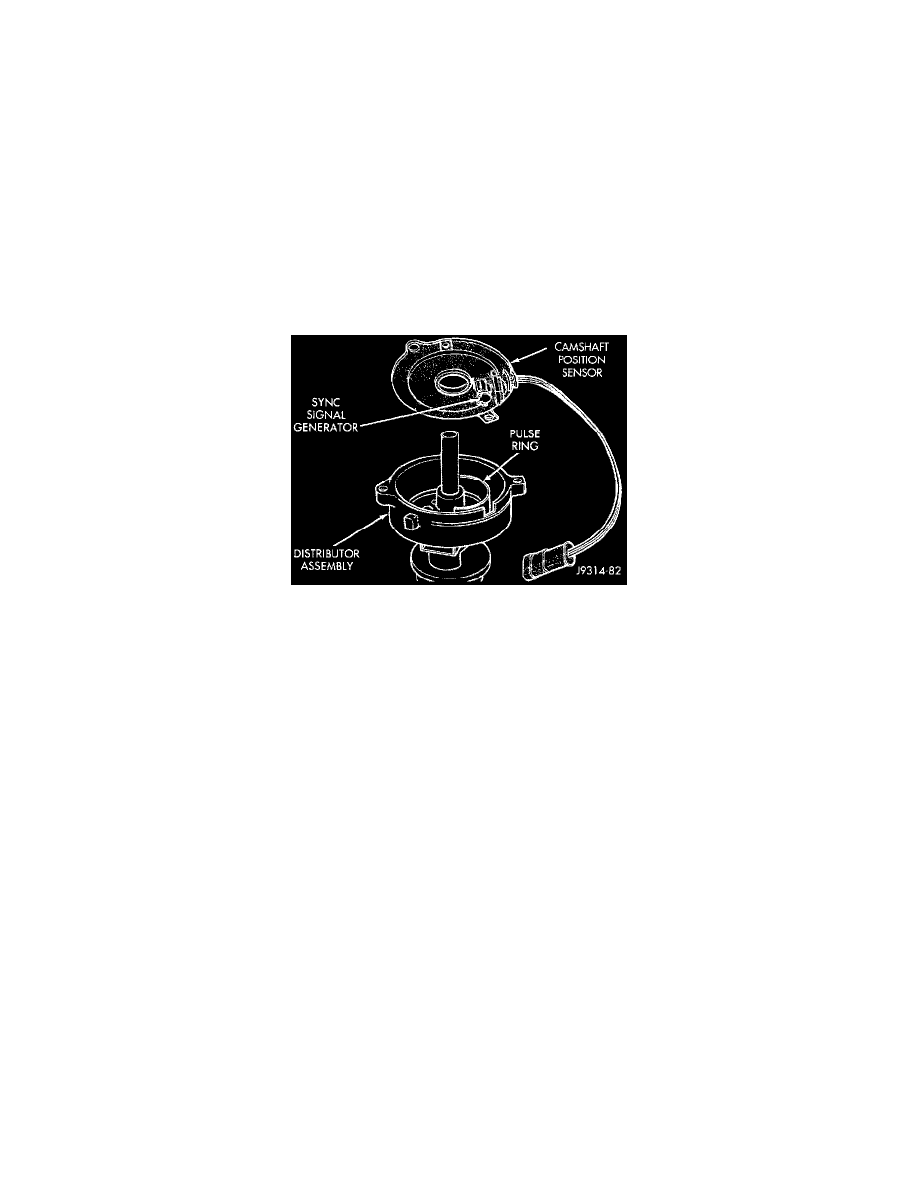Grand Cherokee 2WD L6-4.0L VIN S (1997)

The battery voltage input provides power to the Powertrain Control Module (PCM). It also informs the PCM what voltage level is supplied to the
ignition coil and fuel injectors.
If battery voltage is low, the PCM will increase injector pulse width (period of time that the injector is energized). This is done to compensate for
the reduced flow through injector caused by the lowered voltage.
Brake Switch
BRAKE SWITCH-PCM INPUT
When the brake light switch is activated, the Powertrain Control Module (PCM) receives an input indicating that the brakes are being applied.
After receiving this input, the PCM maintains idle speed to a scheduled rpm through control of the Idle Air Control (IAC) motor. The brake switch
input is also used to supply/deny power to the speed control servo solenoids.
Camshaft Position Sensor
CAMSHAFT POSITION SENSOR-PCM INPUT
Fig. 3 CPS - Typical V8 Shown
A sync signal is provide by the camshaft position sensor. The sensor located in the distributor. The sync signal from this sensor works in
conjunction with the crankshaft position sensor to provide the Powertrain Control Module (PCM) with inputs. This is done to establish and
maintain correct injector firing order.
Crankshaft Position Sensor
CRANKSHAFT POSITION SENSOR-4.0L ENGINE-PCM INPUT
This sensor is a hall effect device that detects notches in the flywheel (manual transmission) or flexplate (automatic transmission).
This sensor is used to indicate to the Powertrain Control Module (PCM) that a spark and or fuel injection event is to be required. The output from
this sensor, in conjunction with the camshaft position sensor signal, is used to differentiate between fuel injection and spark events. It is also used
to synchronize the fuel injectors with their respective cylinders.
